11.2 Conservation
Conservation biology is the science of protecting biodiversity. It responds to the growing imbalance caused by human activities – species are going extinct much faster than new ones can naturally evolve. Conservation is not just about saving individual species but aims to preserve the ecological relationships that sustain ecosystems.
Conservation Strategies
Effective conservation depends on ecological knowledge. Today, the main efforts to preserve biodiversity involve legislative approaches to regulate human and corporate behaviour, setting aside protected areas, conserving individual species and ecosystem restoration.
Legislation
Laws and international agreements play a critical role in protecting biodiversity by regulating human activities that threaten species and ecosystems. These legal tools help prevent extinction, support species recovery, and promote sustainable interactions with nature.
Canada’s Species at Risk Act (SARA) provides a legal framework for identifying and protecting species at risk, developing recovery strategies, and conserving critical habitat. At the international level, the most comprehensive agreement for biodiversity is the Convention on Biological Diversity (CBD), established in 1992. Its current framework, the Kunming-Montreal Global Biodiversity Framework, includes ambitious goals such as protecting 30% of the planet’s lands and waters by 2030 and restoring 30% of degraded ecosystems (30×30).
Climate-related agreements also play a role in biodiversity protection. The United Nations Framework Convention on Climate Change (UNFCCC) and its associated COP (Conference of the Parties) meetings bring countries together to assess progress and strengthen commitments to climate action. The Paris Agreement, adopted under the UNFCCC, aims to limit global warming to well below 2°C above pre-industrial levels. Scientific findings from the Intergovernmental Panel on Climate Change (IPCC) show that exceeding 1.5°C would lead to significantly more severe climate impacts, so there is a strong global push to limit warming to 1.5°C. The IPCC supports these efforts by providing scientific assessments that guide policy decisions and emphasize the role of ecosystems in climate mitigation.
Protected Areas
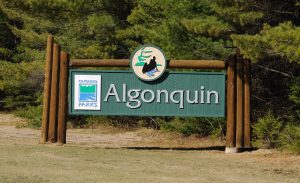
Protected areas are regions set aside to preserve biodiversity. These areas include national parks, wildlife areas, marine reserves, and other conservation zones where human activities are regulated or restricted. By limiting development, resource extraction, and other disturbances, protected areas allow ecosystems to function with minimal human interference and provide safe habitats for species to thrive.
In Canada, protected areas are a cornerstone of conservation efforts. They include National Parks, which are managed by Parks Canada to protect representative examples of the country’s different natural regions. In Ontario, the protected areas system includes provincial parks and conservation areas, covering approximately 11% of the province’s land area (Environment and Climate Change Canada, 2025). These areas are designed to protect significant natural and cultural features while supporting recreation, education, and scientific research.
Species-Level Conservation
Species-level conservation focuses on protecting individual species through targeted actions such as captive breeding, reintroduction, and habitat restoration.
- Captive breeding involves raising individuals of a species in controlled environments (zoos, research facilities, or conservation centers) with the goal of increasing population numbers. Once stable populations are established, individuals may be released into the wild to help restore or reinforce natural populations. This approach is especially useful for species with critically low numbers or those that have disappeared from parts of their historical range.
- Reintroduction is the process of returning individuals to areas where the species once lived but has disappeared. Successful reintroduction depends on suitable habitat, genetic diversity, and long-term monitoring.
- Habitat restoration involves repairing or recreating natural environments that have been degraded or destroyed. This can include planting native vegetation, removing invasive species, restoring water flow, and improving soil conditions. Restored habitats provide the necessary conditions for species to survive and reproduce.
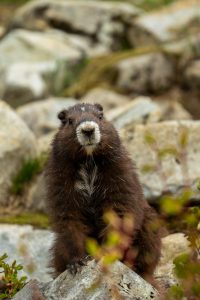
These various conservation strategies often work hand-in-hand. For example, the recovery of the Vancouver Island Marmot (Marmota vancouverensis) has relied on all three approaches (Sustayn, 2024). In the early 2000s, the wild population had dropped to fewer than 30 individuals. Conservationists began a captive breeding program at facilities like the Toronto Zoo and the Calgary Zoo to increase numbers. Once marmots were successfully bred, they were reintroduced into carefully selected alpine meadows on Vancouver Island. At the same time, habitat restoration efforts were undertaken to improve meadow conditions, reduce human disturbance, and ensure the marmots had access to food and shelter. With these combined efforts, the marmot population has seen a notable resurgence, with more than 380 individuals now thriving across the island.
Canada has had several other successful species-level conservation efforts, including the whooping crane, black-footed ferret, the swift fox, and others. In addition to these successes, many species are currently undergoing active conservation efforts. One example is the mottled duskywing (Erynnis martialis), a small butterfly once thought to be extirpated from Ontario. Conservationists have launched a multi-year recovery program involving captive breeding, reintroduction, and oak savanna habitat restoration. Early releases have taken place in protected areas such as Pinery Provincial Park and Norfolk County, and ongoing monitoring is helping refine strategies to support long-term survival.
Species-level conservation efforts are especially impactful when directed toward keystone species, organisms that have a disproportionately large influence on the structure and function of their ecosystems. Protecting a keystone species can lead to widespread ecological benefits, supporting many other organisms that depend on the same habitat.
The Canadian beaver (Castor canadensis) is a classic example of a keystone species. By building dams, beavers transform streams into wetlands, creating rich and diverse habitats that support amphibians, fish, aquatic plants, birds, and mammals. These wetlands also improve water quality, reduce erosion, and help regulate water flow, making them valuable for both biodiversity and ecosystem services. Conservation efforts that protect beavers, such as safeguarding riparian zones, regulating trapping, and promoting coexistence, have cascading benefits. In areas where beavers have returned or been protected, researchers have observed increases in species richness and improvements in ecosystem resilience.
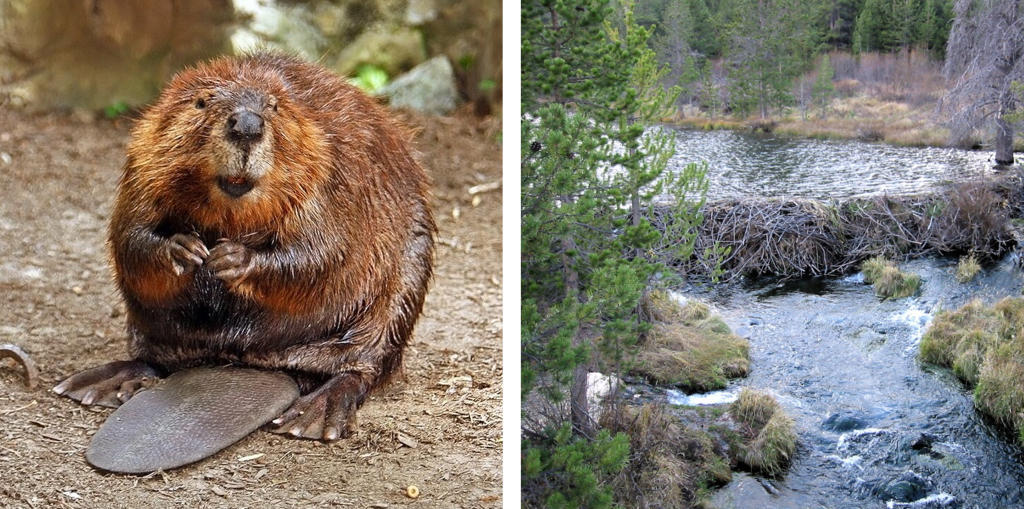
Ecosystem Restoration
Ecosystem restoration is the process of repairing and revitalizing ecosystems that have been degraded or destroyed. Restoration efforts aim to reestablish native species, rebuild ecological processes, and recover the ecosystem services that nature provides, such as water purification, carbon storage, pollination, and flood control.
Restoration can take many forms, including:
- Replanting native vegetation to stabilize soil and provide habitat.
- Removing invasive species that outcompete native flora and fauna.
- Restoring natural water flow in rivers, wetlands, and floodplains.
In Southern Ontario, wetland restoration projects have reversed decades of habitat loss caused by agriculture, urban development, and pollution. One notable example is the restoration of farmland on Pelee Island at the Florian Diamante Nature Reserve, where former soybean fields were transformed back into functioning wetland habitat (Nature Conservancy of Canada, 2023). Restoration efforts included breaking drainage tiles, constructing berms (mounds of dirt used to redirect water), installing water control structures, and planting native vegetation. The restored wetlands now help regulate water levels, reduce nutrient runoff, and store carbon. They also support a wide range of species, including amphibians, waterfowl, fish, and rare plants. These wetlands also provide critical stopover habitat for migratory birds, making them an important link in continental flyways and a favourite destination for birders.
You can learn more about this restoration project on the Nature Conservancy Canada Website: From Marsh to farm and back again: A wetland restoration story.
Everyday Actions for Biodiversity
Preserving biodiversity requires changes in human behaviour and beliefs. Human activities are major drivers of biodiversity loss. But individuals (even students!) can make a meaningful impact through everyday choices.
At the heart of these efforts is the principle of sustainability, meeting the needs of the present without compromising the ability of future generations to meet their own. Sustainability connects conservation to everyday life, encouraging people to live in ways that support ecological balance, protect natural resources, and promote long-term well-being for both humans and wildlife. Even small actions can contribute to large-scale change.
Lifestyle Choices

Everyday decisions about what we eat, buy, and use have direct impacts on the environment. Avoiding single-use plastics, choosing low-impact transportation (public transit, biking or walking), reducing energy use at home (turning off lights and using energy-efficient appliances) and supporting sustainable brands are all ways to lower your ecological footprint.
From an ecological perspective, food choices are especially important. Humans are biologically omnivores, capable of digesting both plant and animal matter. However, choosing more plant-based foods is a more energy-efficient and sustainable option. Producing plant-based meals generally requires less land, water, and energy, and results in fewer greenhouse gas emissions compared to meat production. As discussed in Section 10.2, only about 10% of energy is passed from one trophic level to the next. This means that eating higher on the food chain requires more energy and resources to produce compared to eating lower on the food chain, such as consuming plants directly. By shifting toward a diet that emphasizes fruits, vegetables, legumes, and grains, individuals can reduce their environmental impact while still meeting nutritional needs. This choice also supports biodiversity by reducing the demand for intensive livestock farming, which is a major driver of habitat loss and deforestation globally.
Sharing stories of your own lifestyle choices can motivate others to care and act. Whether through social media, art, writing, or classroom presentations, raising awareness helps build a culture of sustainability. Highlighting success stories shows that change is possible and encourages others to get involved.
Community Science
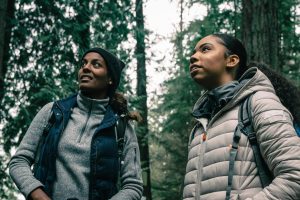
Community science (also known as citizen science) is scientific research conducted in collaboration with the public. Individuals or groups who are not professional scientists contribute to data collection, analysis, and reporting, often in partnership with researchers or institutions. This approach helps expand the scope of scientific inquiry, fosters public engagement with science, and supports large-scale environmental monitoring and conservation efforts.
Participating in community science platforms like iNaturalist allows anyone to contribute valuable biodiversity data. By documenting plants, animals, and fungi in your area, you help researchers track species distributions, monitor population trends, and detect invasive species. Events like the City Nature Challenge and Great Canadian BioBlitz bring communities together to explore nature and contribute to global biodiversity databases.
Advocacy

Advocacy involves using your voice to support environmental protection. This can include signing petitions, contacting elected officials, attending public consultations, or promoting conservation issues on social media. On campus, students can start or join sustainability clubs, organize awareness campaigns, or push for greener policies.
Public engagement is essential for building the political will needed to fund conservation programs, enforce regulations, and support international cooperation. By staying informed and voting for leaders who value environmental protection, individuals help ensure that strong environmental legislation is in place to safeguard ecosystems for future generations.
Volunteering
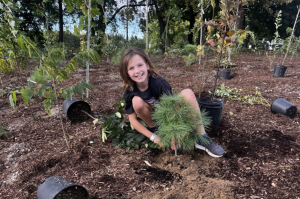
Volunteering offers hands-on opportunities to make a tangible difference in conservation efforts. Activities such as habitat cleanups, tree planting, and invasive species removal directly improve local ecosystems and help restore biodiversity. These experiences also build environmental awareness and connect people to nature in meaningful ways.
Many conservation organizations across Canada, such as Wildlife Preservation Canada, Nature Conservancy of Canada, and local conservation authorities, offer volunteer programs where individuals can assist with species monitoring, habitat restoration, and public education. By volunteering, students gain practical experience, contribute to real-world recovery efforts, and become part of a broader community working to protect wildlife and ecosystems.
Career Pathways
Whether you’re studying science, business, art, or healthcare, you can integrate sustainability into your career. Environmental sciences and conservation biology are obvious paths, but sustainability is increasingly relevant in fields like urban planning, education, law, and marketing. Choosing a career that supports or aligns with environmental values helps build a future where biodiversity is protected.
Hope for the Future
Nature is resilient. With informed action, ecosystems and species can recover. Across the globe, youth-led movements, Indigenous stewardship, and scientific innovation are driving meaningful change. These efforts remind us that conservation is not just a scientific challenge, but that it’s a human one, rooted in care, responsibility, and connection.
Every person has the power to make a difference. Whether through research, restoration, education, or everyday choices, our collective actions shape the future of life on Earth. The path ahead may be complex, but it is filled with possibilities.
No one can do everything, but everyone can do something for biodiversity.
Knowledge Check
Quiz Text Description
- To prevent all human interaction with nature.
- To focus exclusively on restoring plant species.
- To preserve ecological relationships that sustain ecosystems.
- To breed endangered species in captivity only.
- Increase global biodiversity awareness by 30% by 2030.
- Protect 30% of the planet’s lands and waters and restore 30% of degraded ecosystems by 2030.
- Reduce global meat consumption by 30% by 2030.
- Lower greenhouse gas emissions by 30% by 2030.
- A species introduced to restore degraded habitats.
- A species with the largest population in an ecosystem
- A species that has a disproportionately large impact on ecosystem structure and function.
- A species that is endangered due to overexploitation.
- Breaking drainage tiles to restore water flow.
- Planting native vegetation.
- Introducing invasive species to increase biodiversity.
- Constructing berms and water control structures.
- Choosing more plant-based meals.
- Volunteering for invasive species removal.
- Using public transportation instead of driving.
- Participating in citizen science projects.
Answers:
- c. To preserve ecological relationships that sustain ecosystems.
- b. Protect 30% of the planet’s lands and waters and restore 30% of degraded ecosystems by 2030.
- c. A species that has a disproportionately large impact on ecosystem structure and function.
- c. Introducing invasive species to increase biodiversity.
- a. Choosing more plant-based meals.
OpenAI. (2025). ChatGPT. [Large language model]. https://chat.openai.com/chat
Prompt: Create 5 multiple-choice questions using the following content
“11: Protecting Biodiveristy” from Environmental Science (Ha and Schleiger) by LibreTexts is licensed under a Creative Commons Attribution-NonCommercial 4.0 International License, except where otherwise noted.

